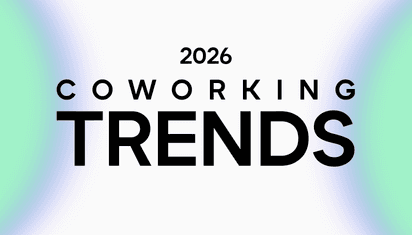The way we work has changed for good. With the rise of remote and hybrid models, coworking spaces are no longer just a place to find a desk and Wi-Fi—they are vital hubs for connection, collaboration, and community. But the most successful spaces know that a truly vibrant community doesn't happen by accident. It’s built with intention.
Creating an environment where people from all backgrounds feel safe, seen, and supported isn't just a "nice-to-have"; it's a strategic advantage. This guide combines actionable steps with the inspiring, real-world journey of Michelle Y. Talbert, the founder of Her Power Space in Florida, to show you how to build a genuinely inclusive and successful coworking community.
1. Find your niche and listen intently
Before you can be inclusive, you have to know who you're serving. The foundation of a strong community is a deep understanding of a specific group's needs and pain points. Michelle Y. Talbert didn't start with a building; she started with a community.
Her journey began with hosting "pop-up" gatherings for Her Power Moves, a community primarily for Black women who had full-time careers and side hustles. She listened to their questions and understood their challenges firsthand.
"My community, my target audience, has shown me what they need in terms of resources and connections and the pain points they have," Michelle explains. "I’ve listened and provided the resources for them to succeed... I guess we chose each other!"
Your action plan:
- Identify your core audience: Who are you most passionate about serving? Is there an underserved group in your area? Your "tribe" could be tech startups, female founders, freelance creatives, or working parents.
- Listen first: Before you build, listen. Use surveys, host small focus groups, or simply have conversations. Understand what this group needs that they can't find elsewhere.
- Build the community, then the space: Like Michelle, you can start building your community online or through pop-up events long before you sign a lease. This validates your idea and builds momentum.
2. Engineer connection organically and intentionally
A great community is more than just a collection of people working in the same room. It's about fostering genuine connections. This requires a mix of organic, spontaneous interactions and thoughtfully planned events.

At Her Power Space, community is built into the ethos. "Unless someone is on the phone or otherwise looks busy we introduce visitors and members to each other," Michelle says. She calls their formal events #unnetworking, focusing on authentic connection over transactional exchanges.
Your action plan:
- Facilitate organic bumps: Make introductions. Design your physical space with common areas that encourage casual conversation.
- Host diverse events: Go beyond standard networking. Michelle’s community loves book clubs, game nights, watch parties, and pop-up shops featuring local businesses. These events foster personal connections and can be significant revenue drivers.
- Organize a diversity day: Collaborate with minority-owned businesses in your neighborhood. This not only supports the local ecosystem but also introduces new people to your space in a welcoming, celebratory way.

100 coworking event ideas
3. Design your space and policies for everyone
Inclusivity must be reflected in your physical space and your official policies. This goes beyond just having accessible infrastructure; it's about creating a sense of psychological safety and belonging.

Physical and infrastructural needs:
- Accessibility: Ensure your space is wheelchair accessible, with ergonomic furniture options and desks that can accommodate everyone.
- Thoughtful amenities: Consider needs beyond the desk. A lactation room for new mothers, gender-neutral restrooms, and a dedicated quiet room can make a world of difference.
- Inclusive decor: Avoid gendered language or artwork that reinforces stereotypes. Your walls should reflect the diverse community you want to build.
- Policy and culture: Her Power Space is a brilliant example of inclusive policy. While it was created to center the needs of Black women, it's proudly men-welcoming.
"There was no way that I would restrict access to men who fit that category, because, frankly, they didn’t have a local option to fit their needs," Michelle notes. "The men in our community understand that while our space is men-welcoming, we do host events that are strictly for women."
This approach demonstrates that you can cater to a specific audience without being exclusionary.
Performing an accessibility audit at your coworking space
4. Market authentically to attract the right people
Your marketing materials are your community's first impression. If potential members don't see themselves represented in your ads, website, or social media, they will assume your space isn't for them.
Your action plan:
- Show, don't just tell: Use photos and videos that showcase a diverse group of real members (with their permission, of course!). Avoid relying solely on generic stock photography.
- Amplify diverse voices: Feature member stories and testimonials from people of different backgrounds.
- Build your community online: Michelle's success is rooted in nearly a decade of nurturing her online community before opening her physical space. As she says, "The best time to plant a tree is 20 years ago and the second best time is today." Your online presence builds trust and acts as your most powerful marketing engine. The community itself becomes your best referral program.
The ultimate guide to coworking space marketing
5. Set the vibe and protect your culture
A truly inclusive community is a safe space. As the leader, your most important job is to establish and protect the culture.
Michelle emphasizes that their strong #weallwin ethos naturally attracts generous, ethical entrepreneurs and repels those who aren't a good fit. This proactive approach is more effective than just reacting to problems.
"I can count on one hand the number of times that I’ve had to either remove someone from the group or to have a private conversation with them," she says. "Our community members know that they can come to me with anything and that it will be addressed. That is the only way we can create and nurture a community that is a safe space."
Your action plan:
- Establish a clear code of conduct: Make your values and expectations clear from the moment a new member joins.
- Create feedback channels: Implement an anonymous comment box or a dedicated email address for members to voice concerns without fear of reprisal. Anonymous surveys are another great tool for gathering honest feedback.
- Act decisively: When an issue arises, address it quickly and directly. This reinforces that you are serious about protecting the safety and integrity of the community.
What are the rules of etiquette that should be followed in creating a coworking space?
6. Trust your vision
Finally, building something unique requires courage. Experts may tell you that your niche is too small or your business model is unsustainable. Trust the vision you've received from listening to your community.
Every expert Michelle spoke with said her pay-as-you-go model wouldn't work. Yet, this very model helped Her Power Space survive the pandemic because it met her community where they were, offering flexibility when they needed it most.
"Get great information but remember that at the end of the day it’s your business," Michelle advises. "Just because something hasn’t been done before doesn’t mean that you can’t be the first. Trust yourself!"
Find your own tribe of fellow coworking operators—Michelle founded a "Sisters of Coworking" community for Black women space owners—to share challenges and best practices. Your vision is valid, and with the right community-first approach, it can become a thriving reality.






